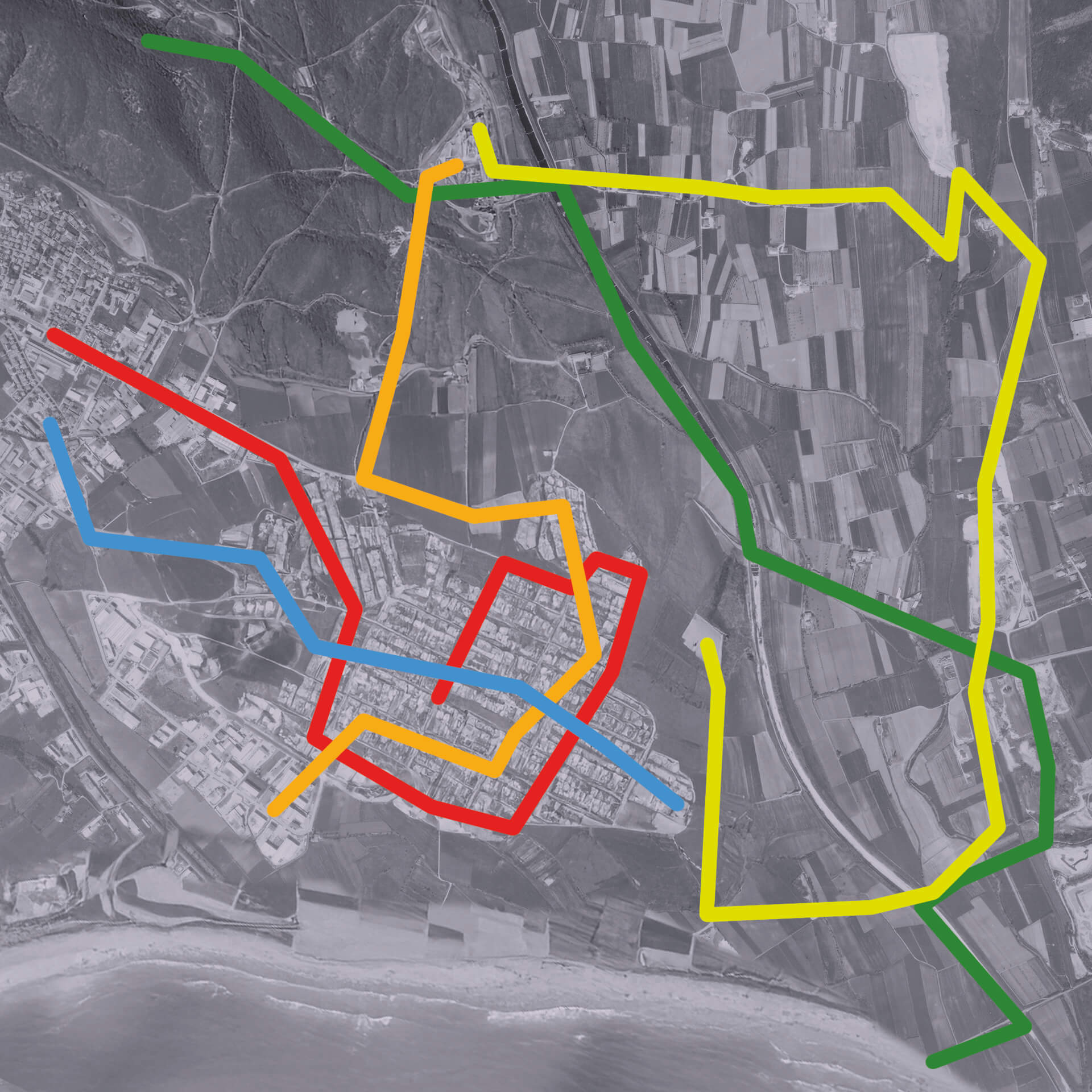Combining different solutions along a cultural itinerary
Communicating Sensory Itineraries is the core of our spin off, so there can be no shortage of articulate proposals that, by systemizing our different accessible solutions, help to reflect on how to properly structure and set up a visit itinerary, while at the same time facilitating the experience of the user.
Indeed, the main goal of our sensory itineraries is to put the visitor at ease, making the visiting experience easier and more engaging, enabling inclusive usability of a site’s spaces and content.
The enrichment of cultural values should therefore be accompanied by a sense of joy, the well-being of having had an experience guided by the installations and technologies but at the same time characterized by the freedom to choose what to see and how much to explore.
We are convinced that the different types of visitors to a remarkable site (schoolchildren, families, individual travelers or organized groups, work groups, users who are interested in the itinerary for various reasons) regardless of cultural level and whether or not they have some physical, sensory or cognitive disability will benefit from a sequence of installations that propose one or more levels of routes, offer a refreshment and rest area, provide useful information about the services and potential of the place, and encourage the acquisition of content by presenting graphics and texts that are clear, brief and explorable by all. They are in fact designed from the principles of Design for All.
In our itineraries, Citislab’s solutions – panels e tactile tables with three-dimensional models – constitute the backbone of the narrative: these will be able to interact with our microarchitectures sustainable in that they are powered by photovoltaic panels and modular pivot points, in which the basic module is always the visuo-tactile panel, and around it different possible functions can decline and compose themselves as satellites.
Such functions could be, for example, a seat equipped with device charging, a touch screen offering additional information of the cultural, scenic, and food and wine contents of the place, a water point for refilling water bottles, a flower bed, and a light point.
The fil rouge that unites and connects all the installations is the technologies: the Beacons or NFC technology that, through an App, suggest the itinerary and at the same time provide in-depth content (PDF texts, audio, Video lis, images) that the user can freely choose to explore having the time, curiosity, a specific interest to do so.
We have identified five thematic visit itineraries, in relation to prevailing peculiarities and site-specific themes, designed to make places and knowledge accessible and usable.
Landscape Route
These are mostly outdoor trails at sites such as cemeteries, archaeological parks, and botanical parks; many times they pass through places characterized by views and vistas, such as: protected areas, riverbanks and lake loops, treks, resorts, and resorts. Combined solutions can be adopted for a “for All” accessibility and inclusivity pathway to transform a landscape site into an experience free of physical and sensory barriers, accessible to all, unique and engaging.
Urban route
These are routes that are developed within urban spaces, particularly in historic centers or suburban neighborhoods, and of course in historic villages, which in recent years are gaining increasing interest. Combined solutions can be adopted for a path of accessibility and inclusiveness “for All” with functional proposals for knowledge of the urban form, its development and public spaces, as well as the most important public and private buildings.

Monumental route
These are routes that are developed within historical areas and edifications such as: archaeological sites, castles and forts, monumental edifices, noble villas and mansions, theaters. Combined solutions can be adopted for a path of accessibility and inclusiveness “for All” with functional proposals for the knowledge of the artifact in its stylistic, formal, and functional characterization and its relationships with the surrounding context.
Museum itinerary
These are routes that are developed within permanent exhibition spaces such as those of museums, technology museums, and thematic museums. Similarly, routes can be equipped in temporary exhibition spaces such as exhibitions and art galleries. Combined solutions can be adopted for a path of accessibility and inclusivity “for All” with functional proposals for both the knowledge of the exhibition space and the narration of its contents, checking also whether to highlight the surrounding context.
Technological itinerary
These are routes that are developed within sites with specialized functions such as: exhibition fixtures, event spaces, airports, railway stations. Great advantage for knowledge and user appreciation may be held by other public edifices such as hospitals, schools, universities.
Very interesting for a public administration is also to communicate large construction sites, which impact urban space for a long time and often the regular use of it by citizens. Informing them about what is being accomplished beyond the barriers or behind the scaffolding can therefore be formative and help shape civic sense.
Combined solutions can be adopted for a path of accessibility and inclusiveness “for All” with functional proposals for both knowledge of the specialisitic building and its relationship to the surrounding space, and, in the case of a construction site, of the project in progress and the dynamics of the construction site itself.
Our Itineraries starting with the UN Convention of 2006 on the rights of persons with disabilities propose a concrete strategy to facilitate conditions of accessibility e knowledge of all possible users, who may have different abilities and varied levels of education and training.
They complement visual stimuli with those derived from tactile perception, further enriching them with auditory and sometimes olfactory stimuli, proposing asensory experience.
We believe that no citizen should be denied such an engaging and enriching experience as learning along a path.
